You can extract natural oils at home using five proven methods: steam distillation, cold pressing, oil infusion, water-based hydrodistillation, and heat infusion. Each technique works best with specific plant materials – steam distillation for aromatic herbs, cold pressing for citrus peels, and infusion for delicate flowers. With proper equipment and safety precautions, you'll create pure botanical oils for personal care, aromatherapy, or culinary use. Discover which method matches your specific needs and skill level.
Steam Distillation: The Classic Method for Essential Oils

While extracting essential oils may seem challenging, steam distillation remains the most reliable and time-tested method. You'll need a still, condenser, heat source, and collection vessel to get started. Before beginning, finely chop your plant materials to maximize oil extraction.
To distill, you'll boil water to create steam that passes through your prepared plant material. As the steam rises, it carries volatile oils through the condenser, where they cool and return to liquid form. The process typically takes 1 to 8 hours depending on the specific plant material being distilled.
You'll notice the condensed liquid naturally separates into two layers – essential oil and hydrosol. Using a pipette, you can easily collect the oil from the surface.
Remember to monitor temperature and pressure carefully, and always wear protective gear when handling hot steam and concentrated oils.
For a simpler setup, you can create a basic distiller using a large pot with an inverted lid and ice for cooling.
Cold Pressing Citrus Oils at Home
Three simple tools are all you need to extract citrus oils through cold pressing: fresh peels, a pressing mechanism, and a storage container.
Start by washing your citrus fruits thoroughly and carefully removing the outer peel while avoiding the white pulp. You'll get the best results by grating the peels to collect the zest.
For successful cold pressing, follow these essential steps:
- Pack your grated zest into a pressing tool (a garlic press works great for small batches)
- Apply firm pressure to extract the oils into a clean container
- Strain the extracted oil through a cheesecloth to guarantee purity
Store your freshly pressed citrus oil in an airtight container and keep it in a cool, dark place. Unlike store-bought essential oils, these homemade extracts are less concentrated and safer for cooking applications.
For extended shelf life, you can mix it with a carrier oil like grapeseed or sweet almond oil.
Simple Oil Infusion Techniques
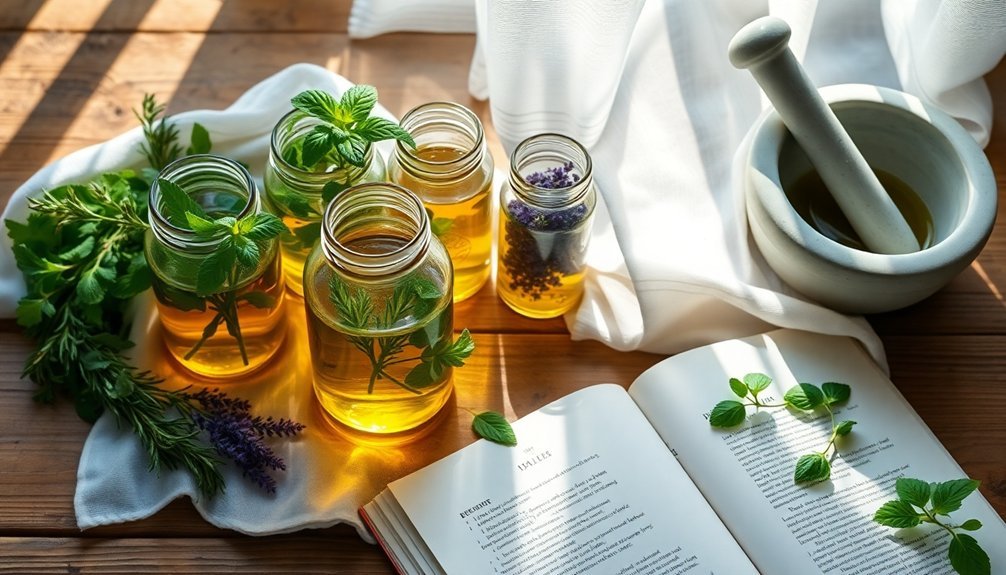
When you're ready to create your own infused oils, several effective methods await your exploration. The cold infusion technique preserves delicate compounds by steeping herbs in oil for 2-6 weeks in a dark place, while sun infusion harnesses natural warmth on your windowsill with daily agitation.
For faster results, you'll find heat infusion particularly useful. Using a double boiler, slow cooker, or oven, you can extract oils from tougher materials like roots and bark in just 2-12 hours, depending on your chosen method. Common oils like almond or jojoba make excellent carriers for your herbal infusions.
Whichever technique you select, always start with completely dry herbs and sterile containers. After infusion, strain your oil through cheesecloth or a fine-mesh strainer, pressing to extract every drop.
Store your finished product in a clean, dark bottle, and consider adding vitamin E for preservation.
Water-Based Hydrodistillation Process
Beyond simple infusions, hydrodistillation offers a more sophisticated method to extract essential oils from plant materials.
You'll find three main approaches: complete water immersion, steam and water combination, or direct steam injection. Each method has its unique benefits for extracting oils from your chosen plants.
For beginners, the water distillation method is your best starting point.
You'll need:
- A Clevenger-type apparatus or similar distillation setup
- A cooling system for vapor condensation
- A separator to collect your oils
While water distillation is the most accessible method, it's not always the most efficient.
If you're looking for higher quality yields, consider water and steam distillation instead. This method keeps your plant material above the water on a perforated grid, reducing the risk of thermal damage while maximizing oil extraction.
Equipment and Safety Essentials for Oil Extraction
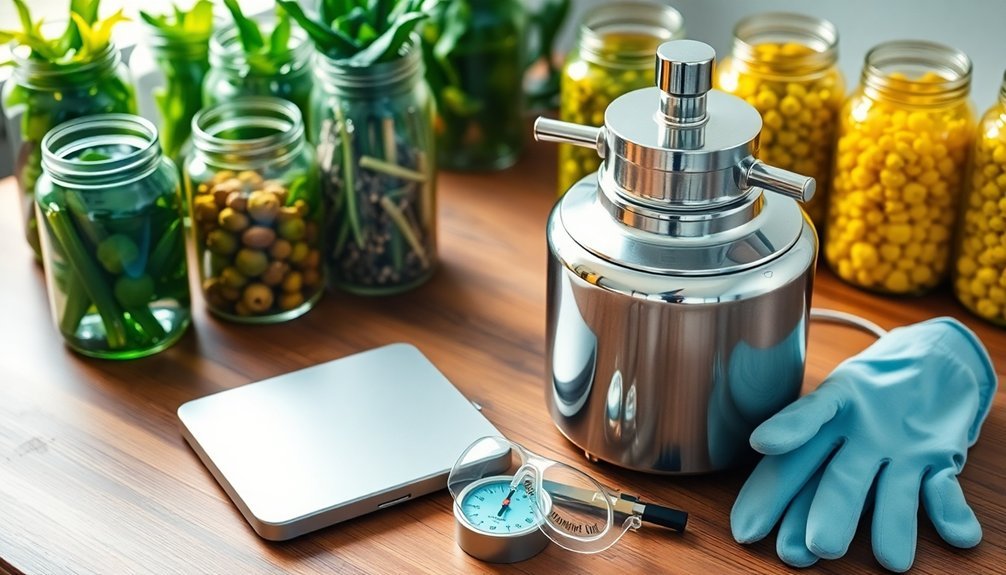
Safety and proper equipment form the foundation of successful oil extraction.
You'll need a reliable boiler made from food-grade stainless steel or borosilicate glass, along with a properly functioning condenser system to cool the vapors. Don't forget essential adapters and connectors to guarantee a secure setup.
Keep your workspace well-ventilated and monitor temperatures carefully – your condenser water should stay below 50°C.
When handling hot equipment, always use protective gloves and confirm all electrical components meet safety standards. Your boiler should have spillage-proof covers and secure C-clamps to prevent accidents.
Clean your equipment regularly to prevent contamination, and store your extracted oils in airtight containers.
If you're using autoclavable components, sterilize them between uses to maintain product purity.
Frequently Asked Questions
How Long Can Extracted Essential Oils Remain Usable if Stored Properly?
Your essential oils' shelf life varies: citrus oils last 6-12 months, most others remain good for 2-3 years, while woody oils like Sandalwood can stay usable for 4-8 years when stored properly.
Can I Mix Different Plant Materials During Steam Distillation?
You shouldn't mix different plant materials during steam distillation. Each plant requires specific temperatures and distillation times, and mixing them can lead to poor oil quality, uneven extraction, and potential cross-contamination.
What's the Minimum Amount of Plant Material Needed for Successful Extraction?
You'll need at least 15-20 pounds of fresh plant material for steam distillation, while cold-press requires several citrus peels. For solvent and CO2 extraction, you'll need substantial amounts for viable yields.
Which Carrier Oils Work Best for Different Types of Plant Materials?
You'll want to use almond or sunflower oil for herbs and flowers, coconut or olive oil for fruits, and jojoba or grapeseed oil for nuts and seeds to get the best extraction results.
Why Do Some Plants Yield More Essential Oil Than Others?
You'll find plants yield different oil amounts based on their genetics, growing conditions, climate factors, and soil quality. High temperatures, proper sunlight, ideal humidity, and rich soil nutrition all boost a plant's oil production.
In Summary
You're now equipped to begin extracting your own natural oils at home using these five proven methods. Whether you choose steam distillation for essential oils, cold pressing for citrus, or simple infusions, remember to prioritize safety and use proper equipment. Start with small batches as you learn, and you'll soon master the art of creating pure, natural oils for personal use.

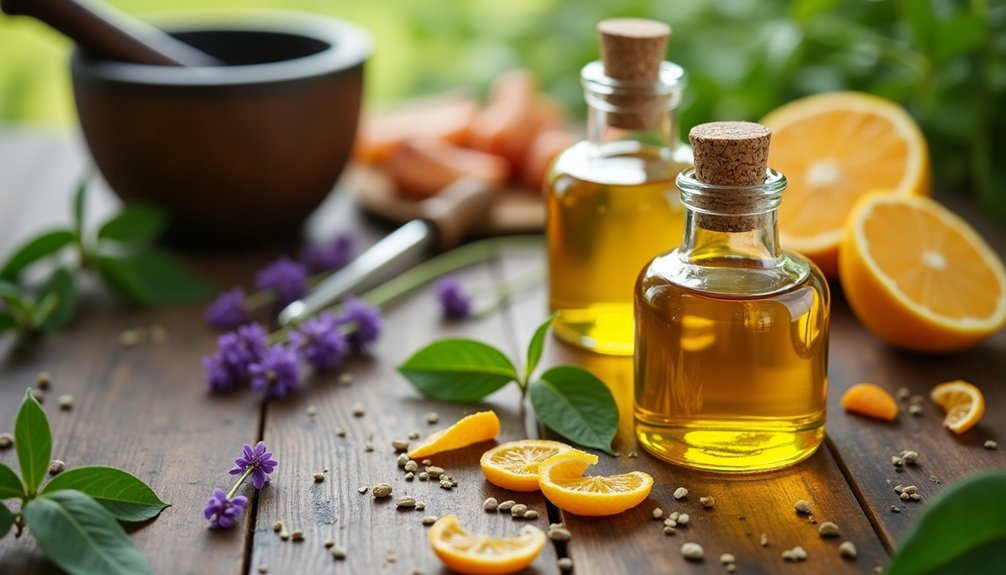
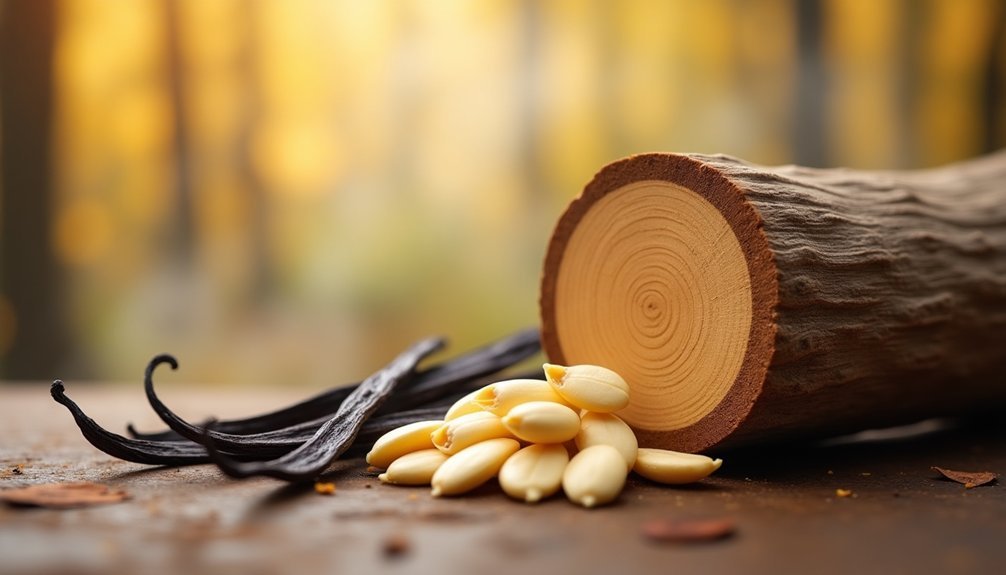
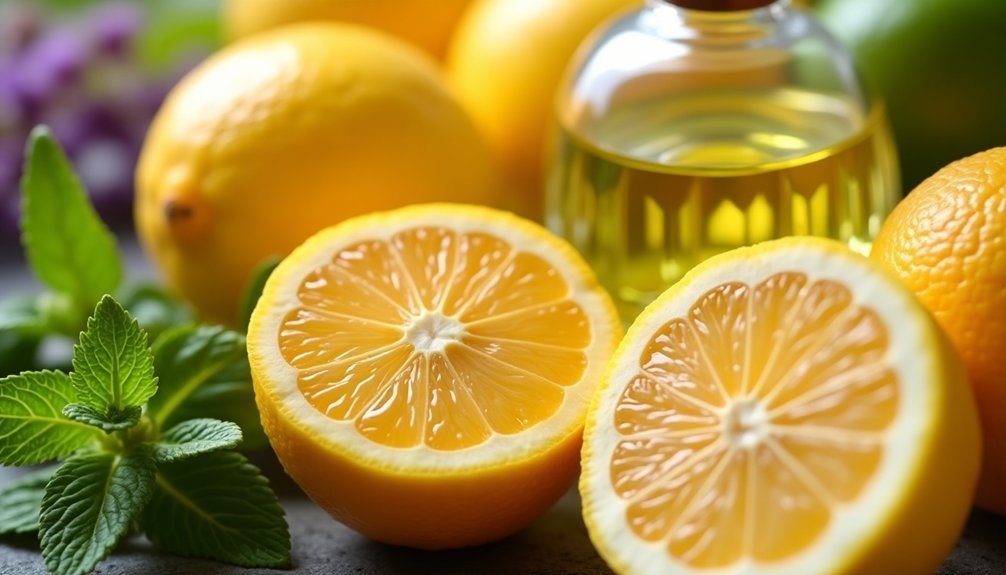

Leave a Reply